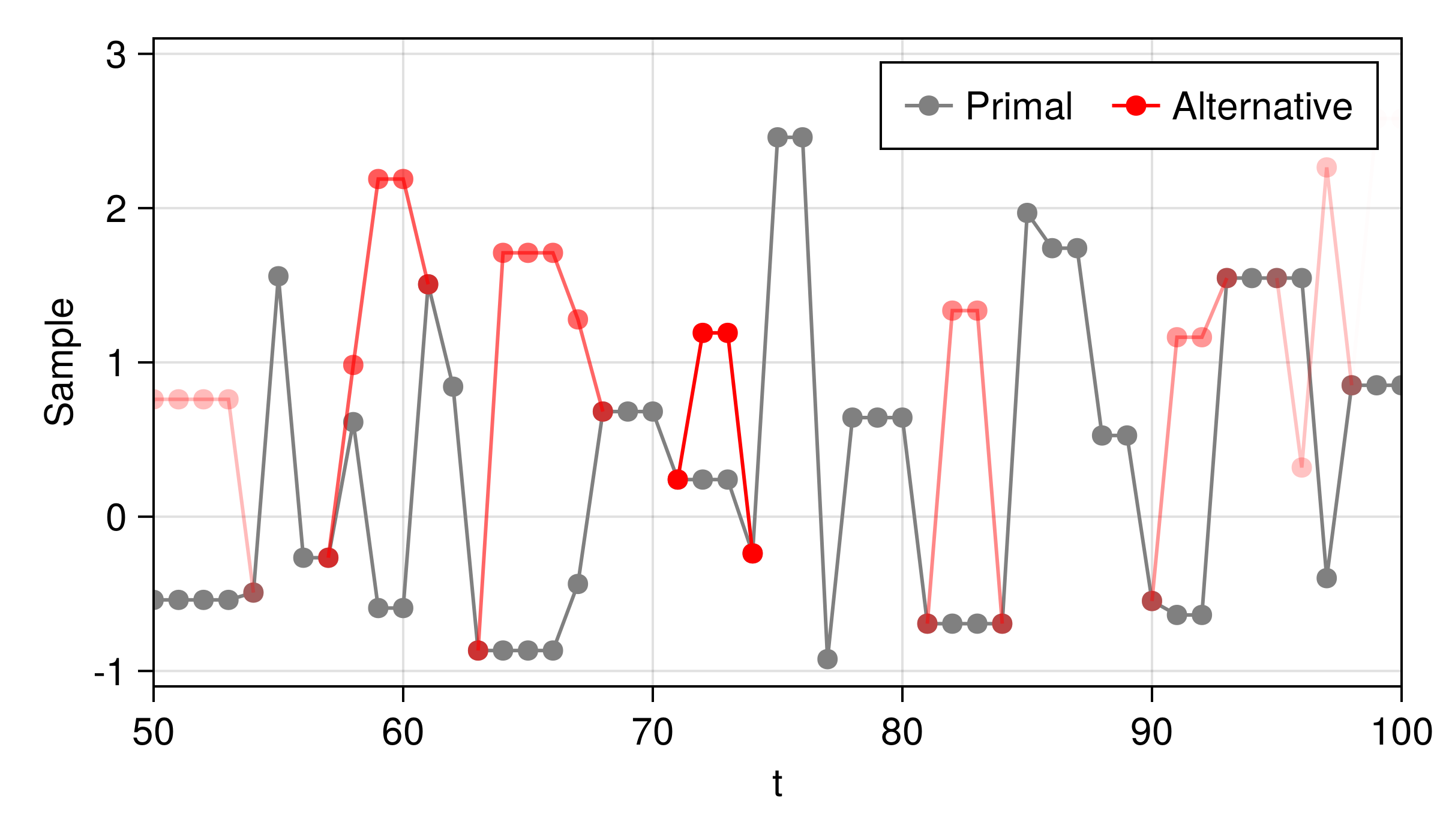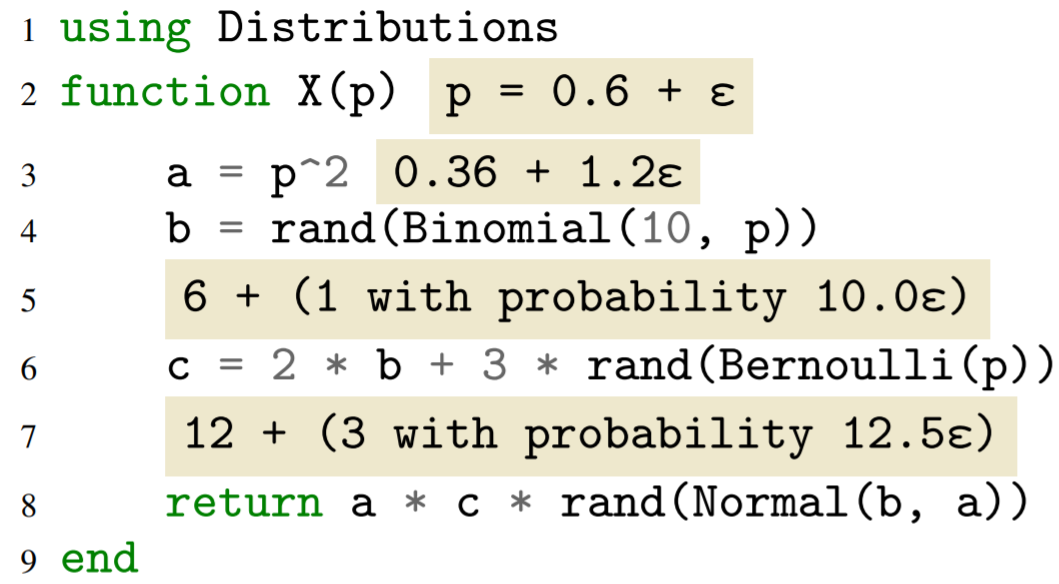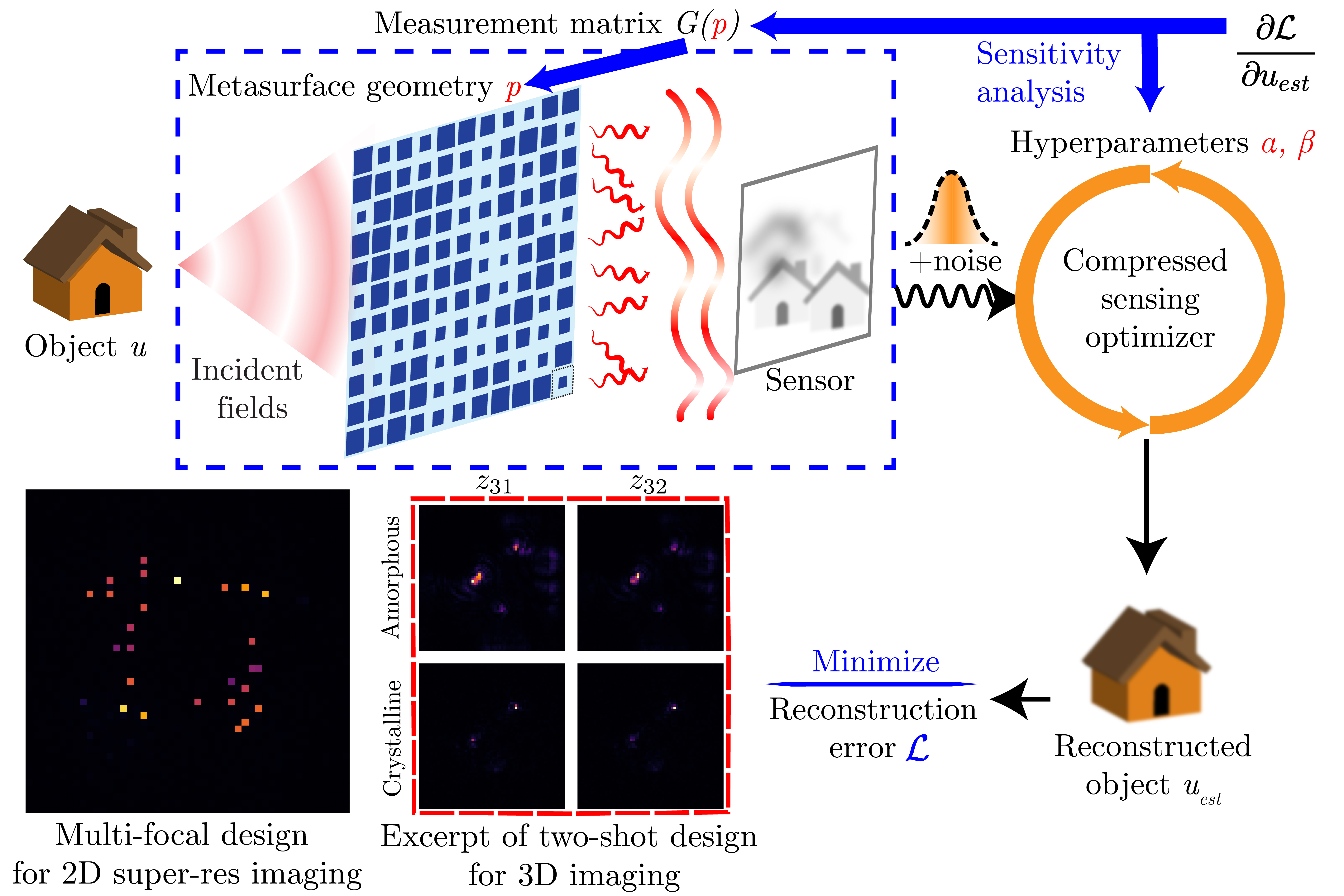Gaurav AryaI'm a senior at MIT, majoring in mathematics and computer science. I'm interested in new methods in numerical analysis and scientific computing, and how they can be applied to accelerate scientific discovery. At MIT, I've been doing research with the Nanostructures and Computation Group, the Julia Lab, and the Probabilistic Computing Project. Outside academics, I enjoy playing tennis, listening to audiobooks, and going on meandering walks. Email / GitHub / Google Scholar / LinkedIn |

|
Papers |

|
Differentiating Metropolis-Hastings to Optimize Intractable DensitiesGaurav Arya*, Ruben Seyer*, Frank Schäfer, Kartik Chandra, Alex Lew, Mathieu Huot, Vikash Mansinghka, Jonathan Ragan-Kelley, Chris Rackauckas, Moritz Schauer ICML Differentiable Almost Everything Workshop arXiv / code / bibtex / We develop an algorithm for automatic differentiation of Metropolis-Hastings samplers, allowing us to differentiate through probabilistic inference, even if the model has discrete components within it. |

|
Automatic Differentiation of Programs with Discrete RandomnessGaurav Arya, Moritz Schauer, Frank Schäfer, Chris Rackauckas NeurIPS 2022 arXiv / code library / code docs / bibtex / We develop a method for automatically differentiating programs that contain discrete randomness. We do so by seeking a natural generalization of the popular “reparametrization trick” to the discrete case, with an emphasis on composability, unbiasedness, and low variance. |

|
End-to-End Optimization of Metasurfaces for Imaging with Compressed SensingGaurav Arya, William F. Li, Charles Roques-Carmes, Marin Soljačić, Steven G. Johnson, Zin Lin Preprint arXiv / code / bibtex / We optimize nanophotonic imaging sytems with millions of degrees of freedom for imaging with compressed sensing. Such systems present a complex high-dimensional manifold \(\mathcal{M}\) of possible imaging matrices. By solving a bilevel optimization problem via (sub)gradient descent, we show how to select a matrix \(G \in \mathcal{M}\) that achieves optimal performance for the task of sparse recovery. |
"Fun with Algorithms" Class. During Summer 2021, I taught a six-week class with Nicolas Tanaka to high-school students, entitled “Fun with Algorithms”,
through the MIT Educational Studies Program (ESP).
Here are the class slides, prior to annotation during class (click to expand). |
| Functional Queue Visualization. I made an interactive visualization of how a functional queue data structure can be made using six functional stacks, together with Shana Mathew and Stuti Vishwabhan, as part of our final project for 6.851 (Advanced Data Structures). You can play with the visualization here and read a short writeup of how it works here (based on this paper). |
| Understanding Photonic Band Gaps via Symmetry and Perturbation Theory. For my final project for 8.06 (Quantum Physics III), I made a short writeup introducing the Hermitian eigenproblem of electrodynamics, and how the appearance of photonic band gaps can be understood via symmetry and perturbation theory, based on the book Photonic Crystals: Molding the Flow of Light. You can read the writeup here. |
| Improving on Drude's Model of Metals. In the 2021 Physics Directed Reading Program, I studied some models of metals that improved over the simple Drude model, mentored by Caolan John. The slides from my final presentation are here. |
| Survey of Recent Breakthroughs in Path TSP. For our final project for 6.854 (Advanced Algorithms), Carl Schildkraut, Nicolas Suter and I wrote a survey of two recent breakthroughs in approximation algorithms for the Path TSP problem. You can find it here. |
|
|